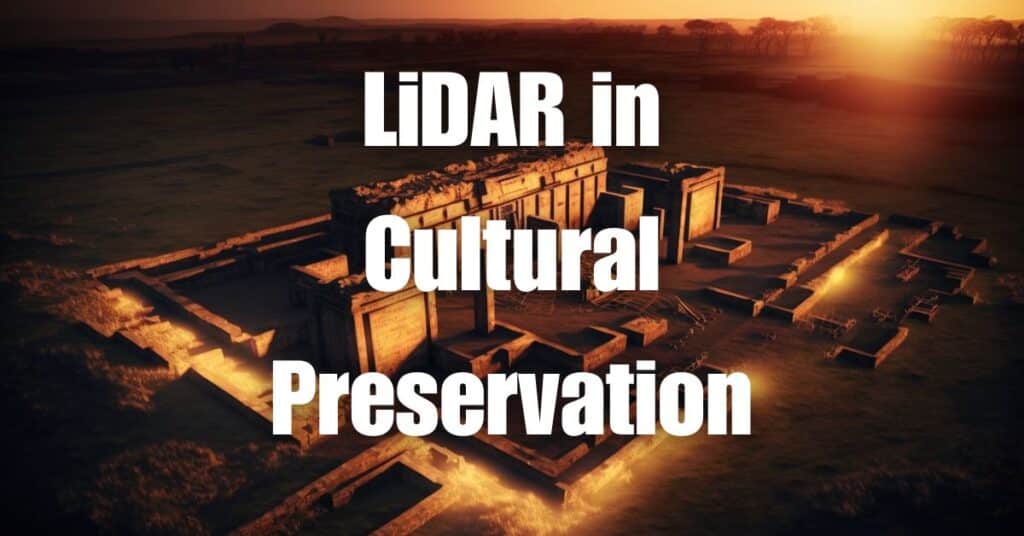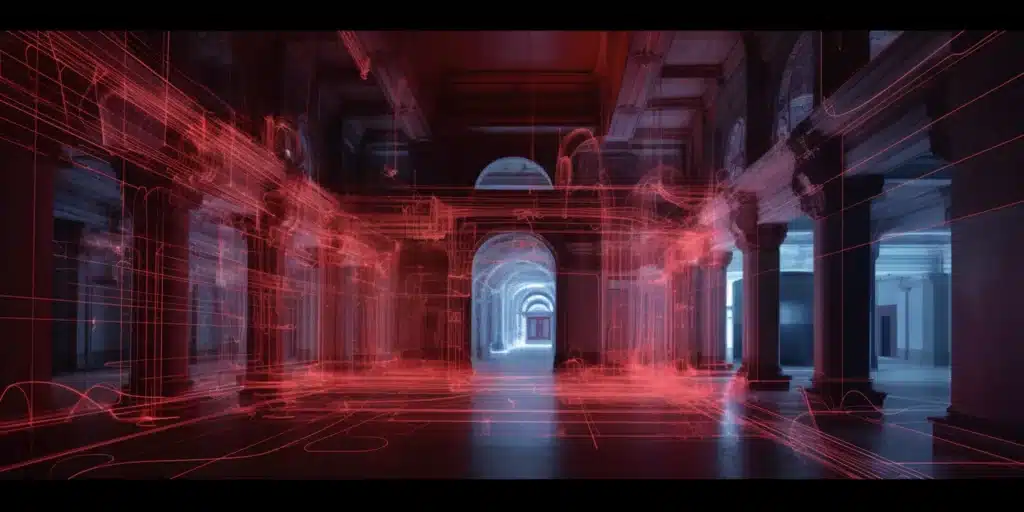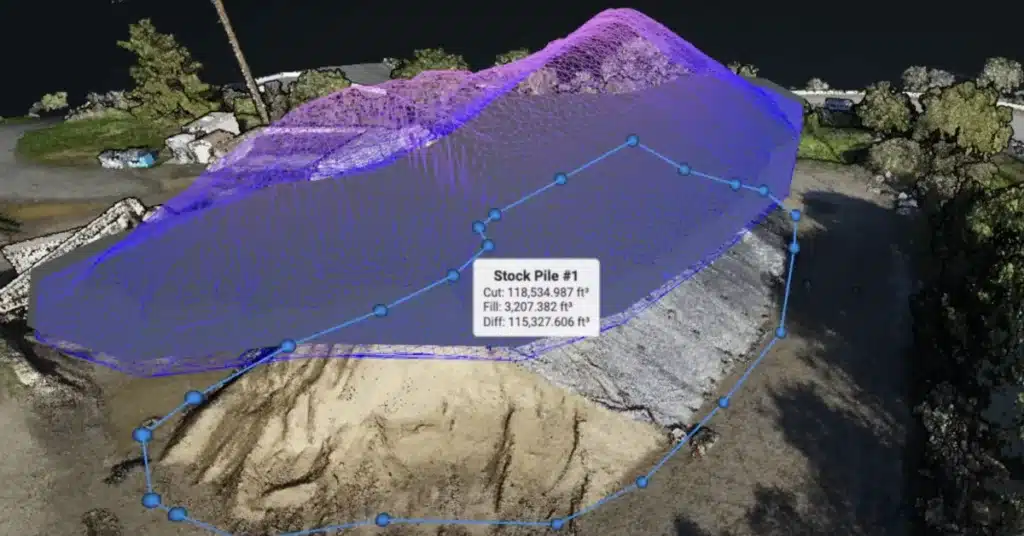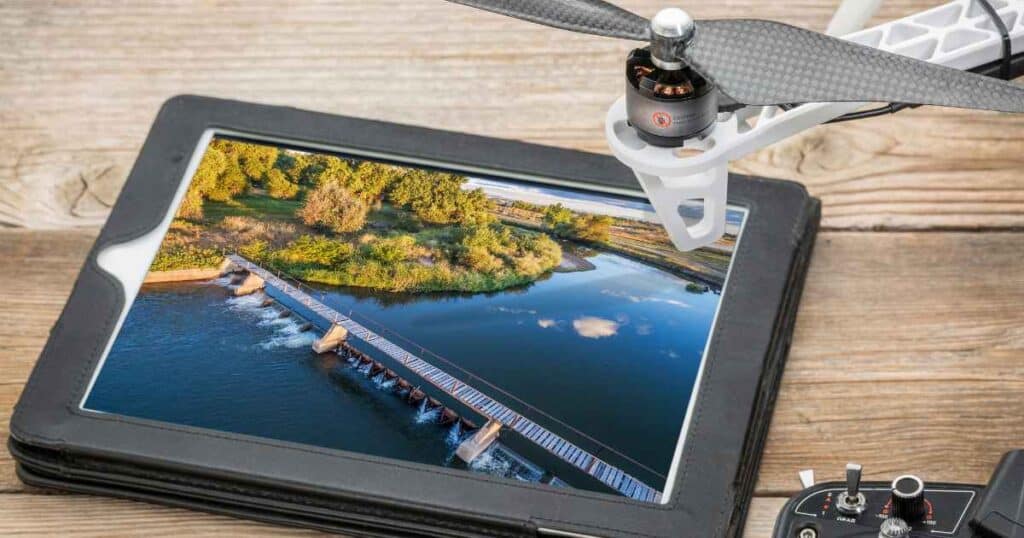Drones equipped with LiDAR technology are revolutionizing the way we preserve and document our rich cultural heritage. The Power of Precision: How Drone LiDAR is Enabling Accurate Cultural Heritage Preservation delves into the fascinating world of LiDAR in Cultural Heritage Preservation. In this article, we’ll explore how this cutting-edge technology is helping experts document, restore, and protect invaluable historical sites, ensuring they remain preserved for future generations. Join us as we uncover the transformative potential of drone LiDAR in cultural heritage preservation.
What is LiDAR technology?
LiDAR, or Light Detection and Ranging, is a remote sensing technology that uses laser light to measure distances and create detailed, accurate, three-dimensional maps of the Earth’s surface. In recent years, drone-mounted LiDAR systems have become increasingly popular due to their versatility and cost-effectiveness. In this section, we’ll explore the basic principles of LiDAR and compare it to traditional survey methods.
Basic principles of LiDAR
LiDAR works by emitting laser pulses towards the ground and then measuring the time it takes for the pulses to bounce back to the sensor after hitting an object or surface. By calculating the distance traveled and combining it with GPS and inertial measurement unit (IMU) data, LiDAR systems can produce highly accurate and detailed 3D point clouds, which can be used to create digital elevation models, contours, and other geospatial products.
LiDAR vs traditional survey methods
Compared to traditional surveying methods, such as ground-based surveys and photogrammetry, LiDAR offers several advantages. Some of these include:
- Speed: LiDAR can collect data much faster, covering large areas in a relatively short amount of time.
- Accuracy: LiDAR systems can provide centimeter-level accuracy, ensuring precise measurements of the surveyed area.
- Density: LiDAR can capture millions of data points, producing detailed and dense point clouds that can be used for various applications.
- Vegetation penetration: Unlike photogrammetry, LiDAR can penetrate vegetation, making it ideal for surveying areas with dense foliage or forest canopies.
How is LiDAR used in cultural heritage preservation?
LiDAR technology has found numerous applications in the field of cultural heritage preservation. Its ability to quickly and accurately map complex environments has made it a valuable tool for archaeologists, historians, and conservationists. In this section, we’ll explore some of the key ways LiDAR is used in cultural heritage preservation.
Mapping and documenting archaeological sites
LiDAR is transforming the way archaeologists map and document archaeological sites. By providing accurate, high-resolution 3D data, LiDAR enables researchers to identify previously unknown features and structures, analyze their spatial relationships, and better understand the overall layout and organization of ancient settlements.
Monitoring structural health of historical buildings
Drone LiDAR can be used to monitor the structural health of historical buildings by capturing detailed 3D models of their exteriors. These models can be used to assess the condition of the structure, identify signs of decay or damage, and plan necessary restoration and conservation efforts.
3D reconstruction and virtual reality experiences
By creating detailed 3D models of historical sites, LiDAR can be used to generate immersive virtual reality experiences, allowing users to explore and interact with these environments in a whole new way. This not only provides a unique educational experience but can also help raise awareness and support for cultural heritage preservation efforts.
Disaster mitigation and planning
LiDAR technology can play a crucial role in disaster mitigation and planning for cultural heritage sites. By providing accurate elevation data and detailed 3D models, LiDAR can help identify areas at risk from natural disasters such as floods, landslides, or earthquakes, and inform the development of effective mitigation strategies to protect these invaluable assets.
The Benefits of Using LiDAR in Archaeology
LiDAR technology has significantly impacted the field of archaeology, offering numerous benefits over traditional methods. In this section, we’ll explore some of the key advantages of using LiDAR in archaeological research and documentation.
Improved Accuracy and Efficiency
LiDAR provides highly accurate and detailed data, capturing millions of data points to create dense 3D point clouds. This level of accuracy enables archaeologists to identify subtle features and structures that might be missed using traditional surveying techniques. Additionally, LiDAR surveys can be completed much more quickly, allowing researchers to cover large areas in a relatively short amount of time.
Non-invasive and Safe for Historical Artifacts and Structures
One of the major advantages of LiDAR is its non-invasive nature. Since it relies on laser light to measure distances, it does not require any physical contact with the surveyed area. This is particularly important when working with fragile historical artifacts and structures, as it minimizes the risk of damage during the surveying process.
Enhanced Data Analysis Capabilities
The 3D data generated by LiDAR can be analyzed in various ways to gain new insights into archaeological sites. For example, researchers can manipulate point clouds to remove vegetation and reveal hidden structures or create digital elevation models to study changes in topography over time. This rich dataset allows archaeologists to uncover new information and answer previously unanswerable questions about the past.
LiDAR Technology in Cultural Heritage Management
The use of LiDAR technology goes beyond archaeological research and extends to the broader field of cultural heritage management. In this section, we’ll discuss how LiDAR can be utilized in planning, conservation, and restoration efforts related to cultural heritage sites.
Planning and Decision-making
Accurate and detailed LiDAR data can inform planning and decision-making processes for cultural heritage sites. For example, it can help stakeholders identify areas that need protection, prioritize conservation efforts, and evaluate the potential impact of development projects on historical sites.
Conservation and Restoration Efforts
LiDAR data can be used to monitor the condition of historical structures and inform necessary conservation and restoration efforts. By providing a detailed baseline of the site’s condition, LiDAR can help identify areas of deterioration or damage that require intervention. Additionally, the 3D models generated by LiDAR can be used to guide and evaluate restoration projects, ensuring that work is carried out accurately and in line with the original design and construction methods.
Case Studies: Successful LiDAR Applications in Cultural Heritage Preservation
Drone LiDAR technology has been successfully employed in various cultural heritage preservation projects around the world. In this section, we’ll examine three notable case studies that showcase the power and potential of LiDAR in this field.
Angkor Wat, Cambodia
LiDAR technology has been instrumental in uncovering new information about the ancient city of Angkor, home to the famous Angkor Wat temple complex in Cambodia. Aerial LiDAR surveys have revealed an extensive and previously unknown urban landscape hidden beneath the dense forest canopy. These findings have significantly changed our understanding of the city’s size, complexity, and infrastructure, providing valuable insights into the lives of its inhabitants.
Chichén Itzá, Mexico
The ancient Mayan city of Chichén Itzá in Mexico has also benefited from LiDAR technology. Researchers have used drone-mounted LiDAR systems to map the site’s structures and surrounding landscape, revealing hidden causeways, platforms, and other features that were previously undetected. This data has enabled archaeologists to better understand the city’s layout and its relationship with the surrounding environment, leading to new theories about its function and importance in the Mayan world.
Pompeii, Italy
LiDAR has played a crucial role in the ongoing preservation efforts at the archaeological site of Pompeii, the ancient Roman city buried by the eruption of Mount Vesuvius in 79 AD. Using LiDAR data, researchers have been able to create detailed 3D models of the site’s buildings and infrastructure, which have been used to inform conservation and restoration projects. Additionally, the data has provided valuable insights into the city’s original construction techniques and helped identify areas at risk from future natural disasters or structural failure.
Challenges and Limitations of Drone LiDAR in Cultural Heritage Preservation
While drone LiDAR offers numerous benefits in cultural heritage preservation, it is not without its challenges and limitations. In this section, we’ll discuss some of the potential drawbacks and obstacles that need to be considered when using this technology in the field of cultural heritage preservation.
Cost and Accessibility
Although the cost of drone LiDAR systems has decreased significantly in recent years, it can still be a considerable investment for many organizations and researchers. Additionally, operating and processing LiDAR data require specialized knowledge and expertise, which can be a barrier to entry for some institutions.
Regulatory Constraints
The use of drones for LiDAR surveys may be subject to local regulations and restrictions, particularly in areas with strict airspace controls or sensitive cultural heritage sites. Researchers and operators must be aware of and comply with these regulations to avoid legal and ethical issues.
Data Processing and Storage
The large volumes of data generated by LiDAR surveys can present challenges in terms of processing and storage. Processing LiDAR data to create 3D models and other geospatial products requires powerful computers and specialized software, while storing the data may necessitate significant storage capacity.
Limitations in Complex Environments
While LiDAR is highly effective in mapping and documenting various types of environments, it may struggle in certain situations. For example, LiDAR can have difficulties accurately capturing intricate or highly reflective surfaces, and its ability to penetrate dense vegetation may be limited in extremely dense or complex environments.
The Future of LiDAR in Cultural Heritage Preservation
As LiDAR technology continues to advance, its applications in the field of cultural heritage preservation are expected to grow and diversify. Ongoing developments in drone capabilities, sensor technology, and data processing will likely lead to even more accurate and detailed mapping and documentation of historical sites. Additionally, as costs continue to decrease and accessibility improves, LiDAR technology is expected to become increasingly commonplace in heritage preservation projects.
Blue Falcon Aerial: Your Partner for Cultural Heritage Projects
If you’re planning a cultural heritage project and are considering using drone LiDAR technology, Blue Falcon Aerial is the perfect partner to help you achieve your goals. With their expertise in LiDAR data collection and processing, as well as their experience in various industries, Blue Falcon Aerial can provide tailored solutions to meet the unique needs of your project.
By working with Blue Falcon Aerial, you’ll have access to a range of deliverables designed to assist with cultural heritage preservation efforts, including high-resolution 3D models, digital elevation models, and orthophoto mosaics. These deliverables can provide invaluable insights and data to inform your research, conservation, and restoration efforts.
In conclusion, drone LiDAR technology has opened up new horizons for LiDAR in Cultural Heritage Preservation. By enabling accurate mapping, monitoring, and documentation of historical sites, it has become an invaluable tool in preserving our shared cultural heritage. However, the technology is still evolving, and further advancements will undoubtedly bring even more exciting opportunities for this field.
Are you eager to learn more about drone LiDAR technology and its applications? Don’t miss our comprehensive guide, Aerial LiDAR 101: An Introduction to its Applications and Benefits, for an in-depth exploration of this fascinating subject. And if you need expert drone services for your projects, don’t hesitate to contact Blue Falcon Aerial. Our skilled team is here to help you leverage the power of drone LiDAR for your unique needs.




